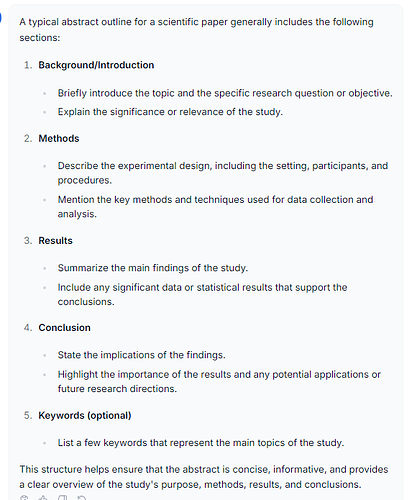General Introduction
Julius is an excellent multidisciplinary tool that can help you streamline your research needs. The purpose of this article is to demonstrate how to effectively use Julius as an extensive tool for research, data analysis, and academic writing. This article will walk the reader through the process of using the different tools available with Julius to help search databases, find relevant literature, perform statistical analysis on data collected, and curate a full-blown academic article.
To illustrate the practical application of Julius in a research setting, consider the following situation:
Imagine a horticultural researcher working for Oregon State University. Recently, a large agricultural company approached the researcher to test the effects of different fertilizer types on the growth of French Marigolds (Tagetes patula), as they are popular in the region for multiple reasons.
The study involves a control fertilizer (NPK Fertilizer: balanced mix of nitrogen, phosphorus and potassium), a compost coupled with biofertilizer (a combination of compost and living microorganisms that promote plant growth), and an organic treatment (a formulation of organic matter used as a nitrogen source, supplemented with rock phosphate and feldspar for potassium).
The researcher is provided with a hefty supply of marigold seeds offered from the agricultural company, with the objective of determining which fertilizer type, if any, best supports the growth of T. patula under controlled conditions. If significant findings are revealed, the researcher is expected to publish the findings to an Agricultural Journal.
Having written an academic thesis before, the researcher understands the general outline and structure of a research paper – introduction and literature review, methodology, results, discussion and conclusion. However, creating a detailed outline and conducting a thorough literature review has always been difficult. Fortunately, the researcher was introduced to Julius by a coworker and has found it useful for curating academic articles and running statistical analyses.
Introduction & Literature Review
The process begins by inputting basic information provided by the agricultural company into Julius. It is important to remind Julius that academic papers may have page limits, requiring the content to remain concise and focused while still capturing all the important elements. Julius provides you with the following output:
After reviewing the outline, the researcher asks Julius to create an interactive checklist to track each task in the outline. This checklist will allow a structured and organized approach to writing (a brief overview of the table is shown below).
Next, Julius is instructed to aid in finding relevant literature for each of the sections in the introduction and literature review. The researcher then carefully fills out the table with the information gathered from their literature review with the help of Julius.
Methodology
The same process used for the Introduction & Literature Review is repeated to generate a table for the methodology section.This includes the details related to the experiment design, plant material, soil preparation, growing conditions, and data analysis. A short snippet of the table is shown below for reference.

Julius assists in sifting through the dense literature to find the needed resources for each section. Once the table has been completed, the methodology section is written, and data collection begins.
For the purpose of this demonstration, we are using a synthetic dataset.

Results
With the data collection complete, the researcher is ready to analyze the data. The dataset can be found here. Below is also a quick preview of the dataset:
The dataset is uploaded into Julius, and two additional columns are added to sum the total dry and wet biomass.
Descriptive statistics are then run to understand the nature of the dataset.
The distribution of the dataset is examined to check the spread and range of the data compared between the three treatments.

Julius is then asked to confirm that the dataset is suitable for a one-way ANOVA, ensuring that all assumptions are met before continuing with the test.
After confirming that the dataset passes each assumption laid out by the one-way ANOVA, the researcher proceeds with the test. They retrieve the following results:

Written Results
A total of 90 plants were harvested from Oregon State University Research Greenhouse. A one-way analysis of variance was run on plant height and dry biomass weight between the different treatments.
Total Dry Biomass
The one-way ANOVA indicated a statistically significant difference in total dry biomass amongst all three treatment groups (Table 1, F(2, 87) = 193.67, p < 0.001). Tukey’s HSD post hoc test was conducted, and concluded that all three treatments were significantly different from one another, with the compost treatment consistently showing the highest mean dry biomass (11.21g± 0.96g), followed by the organic treatment (9.05g ± 0.62g), and lowest for the control treatment (7.04g±0.85g)(Figure 1).
Plant Height
Similarly, the one-way ANOVA results for Plant Height showed significant differences among the treatment groups (Table 1, F(2, 87) = 63.93, p < 0.001). Post hoc tests further revealed significant differences between all three groups, with compost treatment showing the tallest plants (30.40cm±2.36cm), followed by the organic treatment (27.29cm±1.80cm), and the control treatment producing the shortest plants (24.62cm±1.71cm)(Figure 1).
Discussion & Conclusion
The discussion section is laid out similarly to the introduction and methodology. Julius provides a structured outline, which guides the researcher through how set up their section (a short snippet is shown below).
Literature Search with Julius
After completing the chart, the researcher finishes writing their discussion and conclusion section.
Abstract & References
Finally, Julius is used to help format an outline for the abstract and create a checklist to ensure all sections are complete. The references are compiled from the documented literature in the tables, sorted alphabetically, and added to the finalized article.
With the article written and references included, the findings are ready to be sent to the agricultural company!
Keywords: Research Tool, AI, Statistical Analysis, Data Analysis, Academic Writing, Literature Review, Methodology, Discussion, Experimental Design.

























